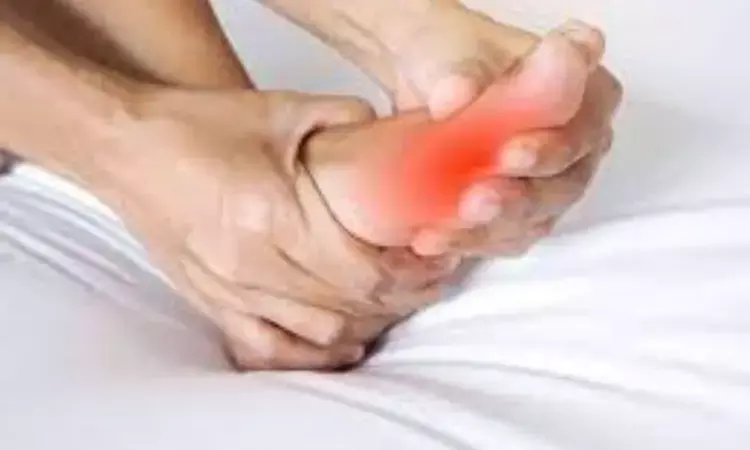- Home
- Medical news & Guidelines
- Anesthesiology
- Cardiology and CTVS
- Critical Care
- Dentistry
- Dermatology
- Diabetes and Endocrinology
- ENT
- Gastroenterology
- Medicine
- Nephrology
- Neurology
- Obstretics-Gynaecology
- Oncology
- Ophthalmology
- Orthopaedics
- Pediatrics-Neonatology
- Psychiatry
- Pulmonology
- Radiology
- Surgery
- Urology
- Laboratory Medicine
- Diet
- Nursing
- Paramedical
- Physiotherapy
- Health news
- Fact Check
- Bone Health Fact Check
- Brain Health Fact Check
- Cancer Related Fact Check
- Child Care Fact Check
- Dental and oral health fact check
- Diabetes and metabolic health fact check
- Diet and Nutrition Fact Check
- Eye and ENT Care Fact Check
- Fitness fact check
- Gut health fact check
- Heart health fact check
- Kidney health fact check
- Medical education fact check
- Men's health fact check
- Respiratory fact check
- Skin and hair care fact check
- Vaccine and Immunization fact check
- Women's health fact check
- AYUSH
- State News
- Andaman and Nicobar Islands
- Andhra Pradesh
- Arunachal Pradesh
- Assam
- Bihar
- Chandigarh
- Chattisgarh
- Dadra and Nagar Haveli
- Daman and Diu
- Delhi
- Goa
- Gujarat
- Haryana
- Himachal Pradesh
- Jammu & Kashmir
- Jharkhand
- Karnataka
- Kerala
- Ladakh
- Lakshadweep
- Madhya Pradesh
- Maharashtra
- Manipur
- Meghalaya
- Mizoram
- Nagaland
- Odisha
- Puducherry
- Punjab
- Rajasthan
- Sikkim
- Tamil Nadu
- Telangana
- Tripura
- Uttar Pradesh
- Uttrakhand
- West Bengal
- Medical Education
- Industry
Gout flares significantly associated with VTE in subsequent 90 days

UK: A recent study published in Arthritis & Rheumatology has found a transient increase in the rate of venous thromboembolism (VTE) within 30 days after hospitalization or primary-care consultation for gout flare among patients with gout.
The researchers suggest that gout patients should be counselled about the increased VTE risk and advised to remain well hydrated and active in the 30 days after the gout flare. As long-term treat-to-target urate-lowering therapy (T2T-ULT) treatment prevents gout in the long term, the findings provide an additional reason for T2T-ULT use with flare prophylaxis in patients with recurrent gout flares.
"The temporal association between gout flare and venous thromboembolism indicate the need for further research to test whether pharmacologic thromboprophylaxis can prevent VTE in patients who have recently experienced a gout flare," Edoardo Cipolletta, Academic Rheumatology, University of Nottingham, Nottingham, UK, and colleagues wrote in their study.
Venous thromboembolism which includes pulmonary embolism (PE) and deep vein thrombosis (DVT), affects ~10 million people worldwide annually. Flares are the most common and dominant manifestation of gout. Previous studies have shown that VTE risk is increased in gout patients, but not whether there was a temporal association between gout flare and VTE.
The study was undertaken by Dr. Cipolletta and colleagues to evaluate potential temporal associations between gout flare and VTE.
For this purpose, the researchers obtained data from electronic primary-care records from the Clinical Practice Research Datalink in the UK, which links data from mortality and hospitalization registers. They evaluated the temporal association between gout flare and VTE using a self-controlled case series analysis adjusted for age and season.
The 90 days after hospitalization or primary-care consultation for gout flare was designated as the exposed period. This was categorized into three 30-day intervals. The baseline period was up to 2 years before the start of and up to 2 years after the end of the exposed period. Using adjusted incidence rate ratios (IRRs), the association between gout flare and VTE was measured.
The researchers reported the following findings:
- 314 patients met the inclusion criteria (age ≥18 years, incident gout, no presence of VTE or use of a primary-care anticoagulant prescription before the start of the pre-exposure period).
- Among the 314 patients, VTE incidence was significantly higher in the exposed period than in the baseline period (adjusted IRR 1.83).
- The adjusted IRR of VTE during the first 30 days after the gout flare was 2.31 relative to the baseline period.
- No increase in the adjusted IRRs was observed in days 31–60 (adjusted IRR 1.49) and days 61–90 (adjusted IRR 1.67) relative to baseline. Results were consistent across sensitivity analyses.
"In this population-based study of patients with a new gout diagnosis, our SCCS analysis showed that the VTE incidence was significantly higher in the 90 days immediately after a gout flare," the researchers wrote. "On further analyses, we found that this elevated risk was restricted to the 30 days immediately after a gout flare."
Reference:
Cipolletta, E., Tata, L. J., Nakafero, G., Avery, A. J., Mamas, M. A., & Abhishek, A. (2023). Risk of Venous Thromboembolism With Gout Flares. Arthritis & Rheumatology, 75(9), 1638-1647. https://doi.org/10.1002/art.42480
Dr Kamal Kant Kohli-MBBS, DTCD- a chest specialist with more than 30 years of practice and a flair for writing clinical articles, Dr Kamal Kant Kohli joined Medical Dialogues as a Chief Editor of Medical News. Besides writing articles, as an editor, he proofreads and verifies all the medical content published on Medical Dialogues including those coming from journals, studies,medical conferences,guidelines etc. Email: drkohli@medicaldialogues.in. Contact no. 011-43720751


